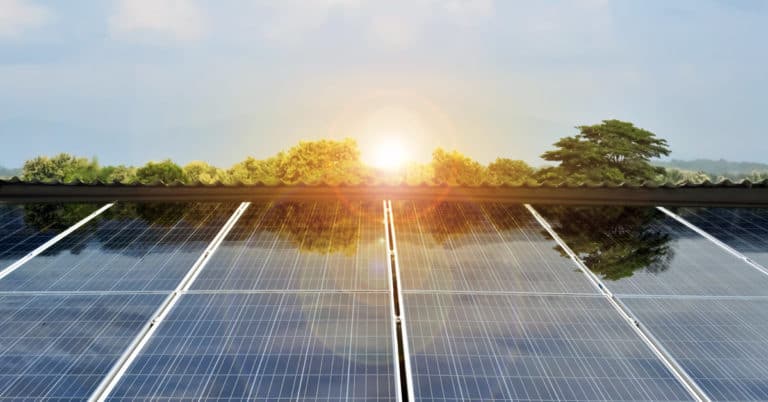The growth and evolution of the solar industry lie in the efficiency of solar modules, panels, and pv kits. The recent innovations continue to increase solar efficiency while reducing its cost, leading to an increase in solar installation by 22%.
Quality solar installer tools enhance efficiency during the installations. Here's a breakdown of these tools.
Solar installation tools are essential equipment installers use to make a solar system functional. They can be electrical, smart, or mechanical. Each of them has a unique function, from measuring, cutting, and drilling to fixing solar components.
These tools enhance safety and accuracy in installation, improving the efficiency and reliability of your solar panel kit.
To ease the installation process, a solar pv or panel installer should have the following tools:
Installers use a digital multimeter to measure the output of the panels, making it easy to calculate the energy efficiency of each panel when installing.
Digital multimeters measure the converted voltage output from its light input.
With the different ranges of readings, from resistance and current to voltage, you can get the necessary readings for electrical components. For example, you can get solar charger controller continuity to confirm any incomplete connections.
Testing a Solar Panel with a Digital Multimeter
It helps you ascertain if each element is working correctly while giving the right output. You don't have to wait until you complete installation to realize missteps or non-functional parts.
A PV tester works almost similarly to a digital multimeter. It checks the quality of output from the panels and compares it to the expected standards.
Its smart options make it a more advanced tool than the multimeter.
Some engineers relay these readings remotely to their quality control team for monitoring or upgrades.
Cable and connector tools are used to enhance cable management and installation. Solar installers run different cables from collar panels to the CCU and then to your house using these tools. 
Solar Panel Technician
If you have solar energy storage equipment in your installation, you might have to connect more cables which calls for precision and organization. Poor cable handling could be a source of breakdowns and confusion when troubleshooting.
By using the correct crimping tools, cutters, and pliers, you'll cut and fix your cables between components without any damage. Use cable ties to properly secure the cables to avoid hanging or sagging cables on your solar PV system.
Solar installers use screwdrivers to secure the solar panels to the roof. The engineers have to drill into the roof, then mount the panel and rails onto the roof using screws. Installers often start with the larger screws to secure the mounting on the roof before finalizing on the smaller rail screws.
These rails usually come with solar equipment. If they need to adjust the size of the rails, they'll have to cut it using a hacksaw.
Solar photovoltaic installers use a solar panel hanger to manage the movement of the panels while on the roof. Instead of moving the panels by hand, they just glide them over the solar panel hanger until it gets to the preferred location.
The hanger holds the panels to prevent any slips or falls that would result in home damage. It also allows the panel to rest safely while on the rail until you complete your installation to the rail and roof.
This drill, also known as the cordless drill, allows PV installers to easily drill into the roof without worrying about the distance or power. It sets up the screw holes where you'll mount your system rails and panels.
Once a solar installation expert finds somewhere viable to connect the attached cord to the power outlet, they can drill on the further end of the roof.
Most installers only need charged batteries to drill freely on any roof material.
A caulk gun protects the roof from further damage after drilling holes into it and secures the screw safely into the drill hole. Once the engineer completes the mounting, they use the caulk gun to seal off the hole. This sealant also helps in preventing leakages and protecting the ceiling.
A PV installer uses a tape measure to measure the roof and panels before installation. They'll compare the design measurements against the actual readings taken to know how they'll structure their installation for the best results. Also, they can accurately mark and install the rails and solar panels without several do-overs and estimates.
Solar installers need their safety equipment during their installation. Every installer must have the necessary certifications and safety knowledge before they start their installations.
They should have undergone training and education on solar energy and its installations, electrical safety procedures, and work-at-height requirements.
Look at this important safety equipment:
Engineers should ensure they have the harness, ropes, and anchors properly set up because they're working at height. With this safety equipment, they protect themselves against falls.
Helmets protect your head in case of a fall. Get proper fitting and certified helmets for your installation project.
Safety boots have the necessary grip to keep you steady while on the roof. Their grounding properties in the rubber soles also tend to act as an earthing when working on electrical wirings.
A solar installer should understand the design and installation of solar equipment and its impact on renewable energy. By understanding how to convert light energy to electricity, you'll take the first step toward becoming a knowledgeable PV installer.
It's challenging to be abreast of the improvements and changes in the solar energy niche. However, with the right interest and understanding of how to manipulate and use your tools for the best installations, everything falls into place.
Solar installers also need to learn how to deal with service reviews and handle clients properly.
A solar installer needs to have the following skills and qualities:
- Attention to detail
- Understanding the solar and electrical components
= Cabling guru
- Design expert

